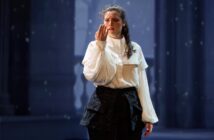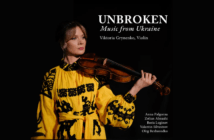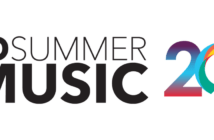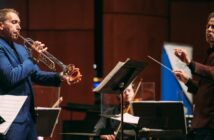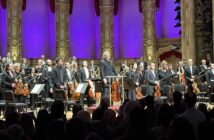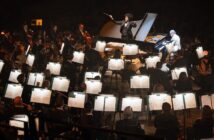Canadian soprano and 20/21st-century specialist extraordinaire, Barbara Hannigan, appeared at Toronto’s Koerner Hall on Nov. 28 with French pianist Bertrand Chamayou in a program they are currently touring across North America. This uncompromising, tightly-constructed 70 minute recital demonstrated why Hannigan is the current queen of ‘non-traditional’ vocal repertoire.
The evening opened with French composer Olivier Messiaen’s song cycle, Chants de terre et de ciel (1938). The text is the composer’s own and is his customary mix of fervent Catholicism combined with love for family. The opening song, “Bail avec Mi (pour ma femme),” celebrates the contract between husband and wife. Messiaen’s wife Claire Delbos was referred to as ‘Mi” and is lovingly referred to as the “sweet companion of my bitter shoulder” in the song’s final words. Later in the cycle two songs are dedicated to their son, Pascal, who is portrayed in peaceful sleep in “Arc-en-ciel d’innocence (pour mon petit Pascal)”.
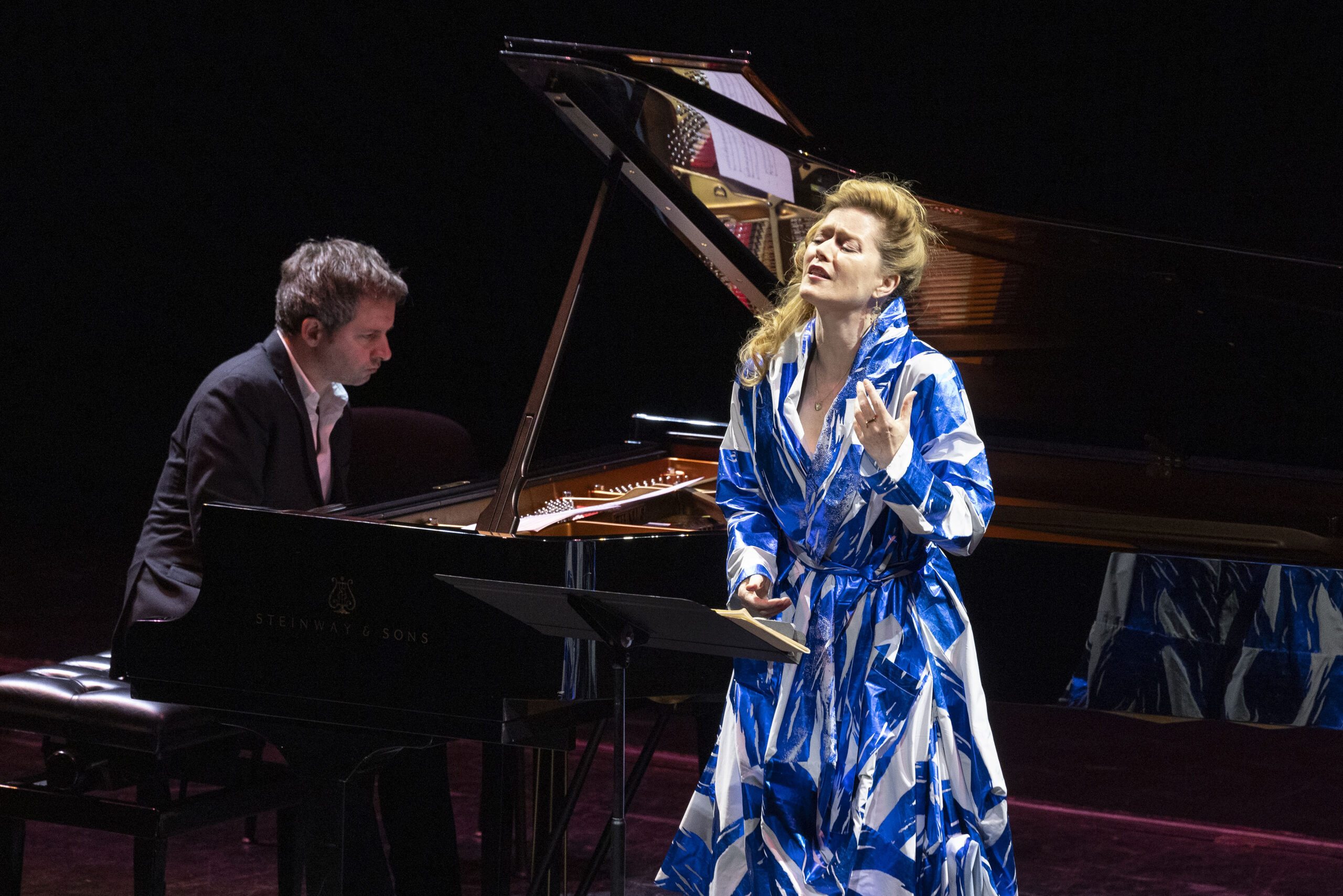
Barbara Hannigan and Bertrand Chamayou. Photo: Luciano Romano
Messiaen’s texts are elusive and the cycle, vocally demanding. It contains everything from sustained, chant-like passages to fast-moving melismas such as the repeated “Alleluia” in the final “Résurrection (pour le jour de Pâques)”. Hannigan’s technical virtuosity allows her to handle all of this seemingly without effort, or rather, with what Italians call sprezzatura—the art which conceals art. While superbly delivered with intense drama, the resonant acoustic of Koerner Hall proved disadvantageous to the singer. Text was unclear, which is a problem in a work that prioritizes words as much as the vocal line. Hannigan also has a tendency to darken bright French vowels which further obscured her verbal communication.
Next, pianist Chamayou performed two of Alexander Scriabin’s poèmes. As noted in the program, these short, non-narrative pieces were categorized by his early biographer Yevgeny Gunst as realisations “in sound of a certain experience.” Poème nocturne (1911-12) is a subdued, reflective composition that flits on the edge of conventional tonality. Vers la flamme (1914) is more aggressive and found Chamayou drawing huge, almost frightening, crashing climaxes from the instrument.
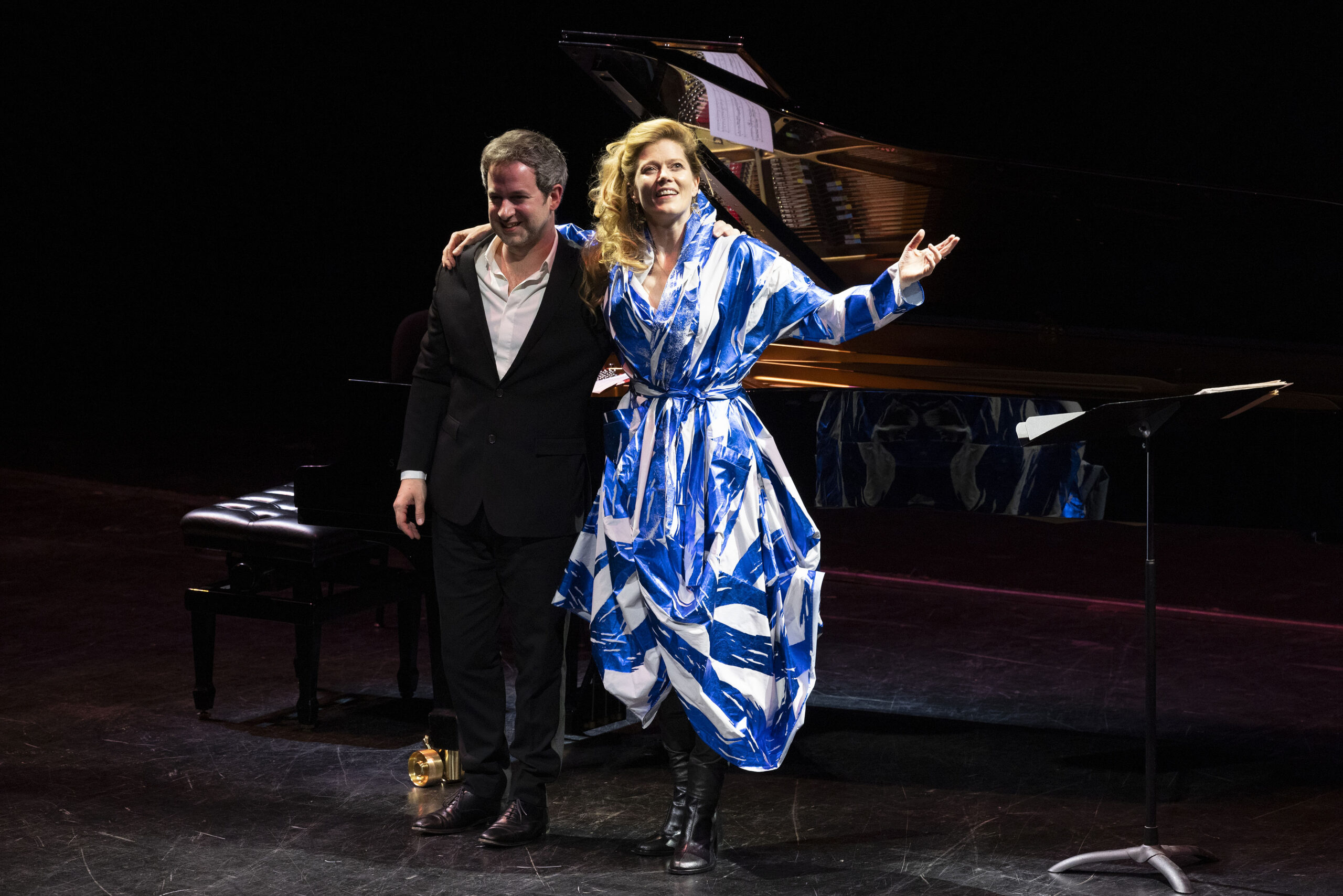
Barbara Hannigan and Bertrand Chamayou. Photo: Luciano Romano
The recital’s final section was dedicated to American composer John Zorn’s 2012 group of songs, Jumalattaret, inspired by the epic Finnish tale, Kalevala, in praise of nine Finnish goddesses. This extraordinary cycle contains an astonishing array of vocal and piano techniques; everything from clucking like a chicken, to primitive exhalations into the piano case through to chimes played by the singer at the end. Virtuosity is not only demanded of the singer, but the pianist too, who is a full creative partner as he strums and plucks the piano strings.
It is worth seeking out one of the many conversations in which Hannigan has documented her struggles with learning the cycle. Moments when it is nigh impossible for the singer to locate the pitch; intense, coloratura passages; long, sustained high pitches seemingly held forever but sung piano…all of this Hannigan delivered with jaw-dropping command. The pitched sections are all sung as a vocalise while the Finnish text is declaimed. A recurrent motif finds the singer heavily panting or exhaling under the piano’s raised lid. The overall effect is primal and scary.
It is this type of absolute artistic commitment that audiences expect of an artist like Hannigan. Her level of technical virtuosity in this repertoire is unparalleled today. Although the hall was disappointingly unfilled for a Canadian artist of her calibre, the appreciative crowd leapt to its feet at the cycle’s conclusion. Lucky Vancouver, Victoria and Ottawa who will be hearing this program over the next week.
Barabara Hannigan and Bernard Chamayou continue their North American tour throughout December.
Watch Hannigan learn Zorn’s Jumalattaret here: https://fb.watch/w9Ph6TZsYk/




